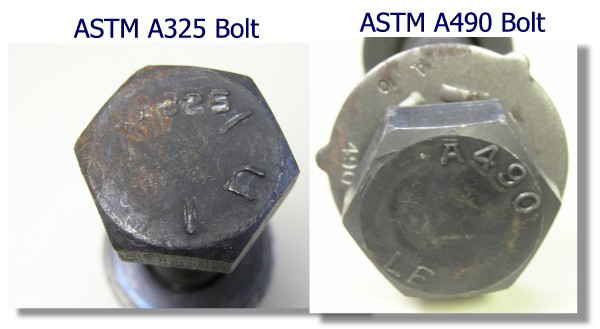Question: Can someone explain how tension and torque relates to bolted connections?
Answer: Sure, we’ll try our best. The relationship between tension and torque should be looked at cautiously, since it is very difficult to indicate the range of conditions expected to be experienced by a fastener. Torque is simply a measure of the amount of energy required to spin the nut up along the threads of a bolt, whereas tension is the stretch or elongation of a bolt that provides the clamping force of a joint. Bolts are designed to stretch just a tiny bit, and this elongation is what clamps the joint together. Torque is a very indirect indication of tension, as many factors can affect this relationship, such as surface texture, rust, oil, debris, thread series and material type just to name a few. Virtually all the torque/tension tables that have been developed, including ours, are based on the following formula:
T = (K D P)/12
- T = Torque (ft-lbs)
- D = Nominal Diameter (inches)
- P = Desired Clamp Load Tension (lbs)
- K = Torque Coefficient (dimensionless)
The value of K is a dimensionless torque coefficient that encompasses variables such as those listed above, as well as the most significant variable, friction. The value of K can range from 0.10 for a well lubricated/waxed assembly, to over 0.30 for one that is dirty or rusty. The values we used when calculating our values are:
- 0.10 = Waxed/Lubricated
- 0.20 = Plain, as received condition, slightly oily
- 0.25 = Hot-Dip Galvanized
The appropriate torque value to use in a specific application is best obtained by using a calibrated torque wrench and a Skidmore-Wilhelm load indicating device to equate actual torque to the desired tension. For ASTM A325 and A490 structural bolts The Research Council on Structural Connections (RCSC) recommends:
The pre-installation verification procedures specified in Section 7 shall be performed daily for the calibration of the installation wrench. Torque values determined from tables or from equations that claim to relate torque to pretension without verification shall not be used.
(RCSC Specifications, June 2004, pg. 62, 8.2.2)
An alternative and more accurate method for assuring proper tension would be to use a direct tension indicator or DTI. These are available for use with ASTM A325 and A490 structural bolts and are engineered to compress at the proper tension, assuring the installer that the proper clamp load is achieved. Hopefully, this short introduction to bolt connections helps address some of the confusion surrounding this issue.





